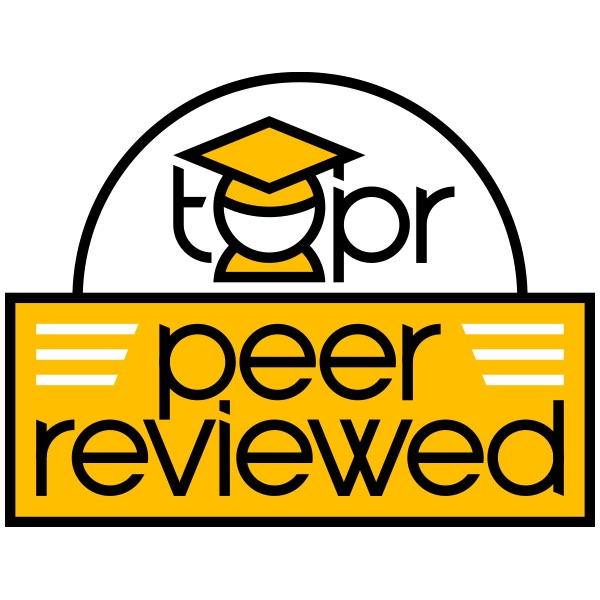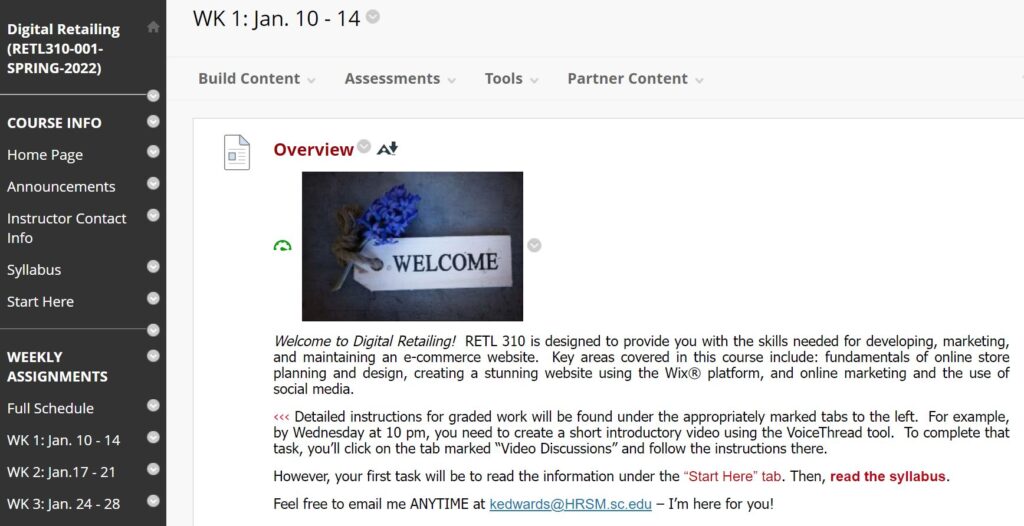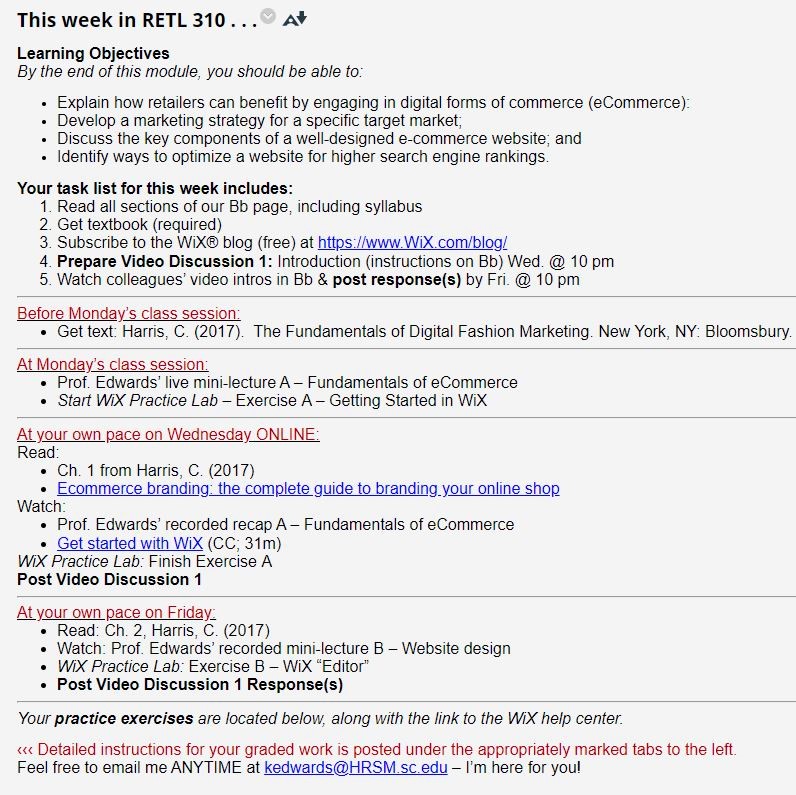Tags: Backward Design, course content, Curriculum Design Model, Instructional Design, Peer-Reviewed Entry

Description
High quality online courses begin with well-thought-out planning and course design. One approach to planning is based on Wiggins and McTighe’s (2005) Understanding by Design curriculum development model, Backward Design. When used to plan an online course, this model can help incorporate the most appropriate pedagogical approaches to create an engaging course that connects students with content, faculty and each other (Moore, 1989).
Backward Design is an instructional design strategy in which the course developer begins the process by drafting and reflecting on the intended learning outcomes of the course — beginning with the end in mind. This involves inquiring first about the final objectives – What knowledge should students acquire, or skills should they master by the end of the learning experience? With these in mind, the developer can then strategically choose appropriate content, develop learning activities, and create student assessments that are geared toward supporting student success. Most importantly, when assessments, content, and activities are aligned to learning outcomes, developers can plan so that everything works together to ensure that students learn.
Strategy
Faculty sometimes begin the process of online course development by identifying specific topical matter, sequencing those topics into a logical flow, gathering course content, then dividing the content into distinct learning modules. Although the importance of using modules to organize and present course content and activities cannot be understated, online courses may best be developed by “starting at the end” with Backward Design.
Here’s how:
- Begin by determining what students should be able to do by the end of the course or learning unit. Use Bloom’s Taxonomy (Rev.) to state the learning objectives in pro-active terms. For example, “By the end of this course, you should be able to articulate the steps in backward course design.”
- Identify what assessments you will use in the course to measure student learning.
- Formative assessments help you identify whether a student is on track to achieve the stated objective(s). This involves meaningful and personalized feedback, and is often provided through low-stakes learning activities, such as short assignments and quizzes.
- Summative assessments enable you to determine whether the student has demonstrated mastery of the learning objective(s). Final projects, exams, and video demonstrations are examples that are sometimes used as summative assessments.
- The final step is to design the learning activities. This includes scaffolding instructional content and active learning strategies that are based on pedagogical best practices. Instructional content can either be instructor-created, publisher content, or open educational resources. Active learning strategies provide students with opportunities to practice what they have learned before they are tested with a graded assessment that measures learning.
This reverse-order approach may seem counterintuitive, but once the objectives and assessments have been determined, you are better able to find or create supporting readings, mini-lectures, assignments, activities, and other course content. Notably, the Backward Design approach is an effective method for developing any high-quality course, whether online, face-to-face, or blended format. It works well in creating professional development workshops as well.
Application of Strategy
Backward Design can be applied to any academic course and can be used as a framework to guide online course design and development. This strategy was used by the authors during 2021 to plan Edwards’ RETL 310: Digital Retailing online course (taught Spring 2022).
The Backward Design Planning Worksheet was used to plan this course using the following steps:
[1-LEARN]
Write course learning outcomes or rather, specific knowledge, skills and abilities that students will be able to achieve by the end of the course. Six outcomes were detailed, ranging from students being able to discuss fundamental concepts to applying best practices in the field.
[2-ASSESS]
Align assessment(s) for each outcome. These included discussions, reflections, quizzes, and website creation.
[3-TEACH]
The next step was to identify instructional content and design practice learning activities. A variety of materials and activities were incorporated, including content such as textbook readings, lecture videos, web articles, external videos. Learning activities included class discussions, practice labs, and mini-discussions.
Again, the worksheet (see attached Course Backward Design Worksheet RETL310) was used to outline specific content and activities linked to assessments, each of which were aligned to the six course learning outcomes. This process helped with the planning of scaffolded learning opportunities throughout the course.
After the worksheet was finalized, it was used to create a detailed, module-by-module Course Schedule (see example syllabus). This Course Schedule was the roadmap to planning specified instructional content (lectures, assessments, assignments, readings, etc.) and to design the course in Blackboard (see course screenshots).
While the example application above was specific to the linked sample artifacts, Backward Design lends itself to the planning of any course in any discipline. Furthermore, using a tool such as the Backward Design Planning Worksheet helps to provide an overview to ensure that there are no gaps in the curriculum or course design. Rather, they should work together toward a meaningful learning experience for students.
Link to Artifact(s)
Attached please find:
- Backward Design worksheet (developed by the authors),
- Example course syllabus,
- Actual assignment (with directions provided to students, and
- Select screenshots of course content (developed in Blackboard.).
- Image 1

- Image 2

References
Davis, N., Gough, M. and Taylor, L. (2021). “Enhancing online courses by utilizing “Backward Design”, Journal of Teaching in Travel & Tourism, 21(4), 437-446.
Moore, M. G. (1989). “Editorial: Three types of interaction”, American Journal of Distance Education, 3(2), 1-7.
Richards, J. C. (2013). “Curriculum approaches in language teaching: Forward, central, and backward design”, RELC Journal: A Journal of Language Teaching and Research, 44(1), 5–33.
Wiggins, G. and McTighe, J. (2005). Understanding by design, (2nd ed.), Alexandria: ASCD.
Citation
Frass, L., & Edwards, K. (2022). Using backward design to move online courses forward: laying the pedagogical foundation for high quality courses. In A. deNoyelles, A. Albrecht, S. Bauer, & S. Wyatt (Eds.), Teaching Online Pedagogical Repository. Orlando, FL: University of Central Florida Center for Distributed Learning. https://topr.online.ucf.edu/using-backward-design-to-move-online-courses-forward-laying-the-pedagogical-foundation-for-high-quality-courses/.Post Revisions:
- June 24, 2022 @ 11:44:48 [Current Revision]
- June 16, 2022 @ 10:54:28

